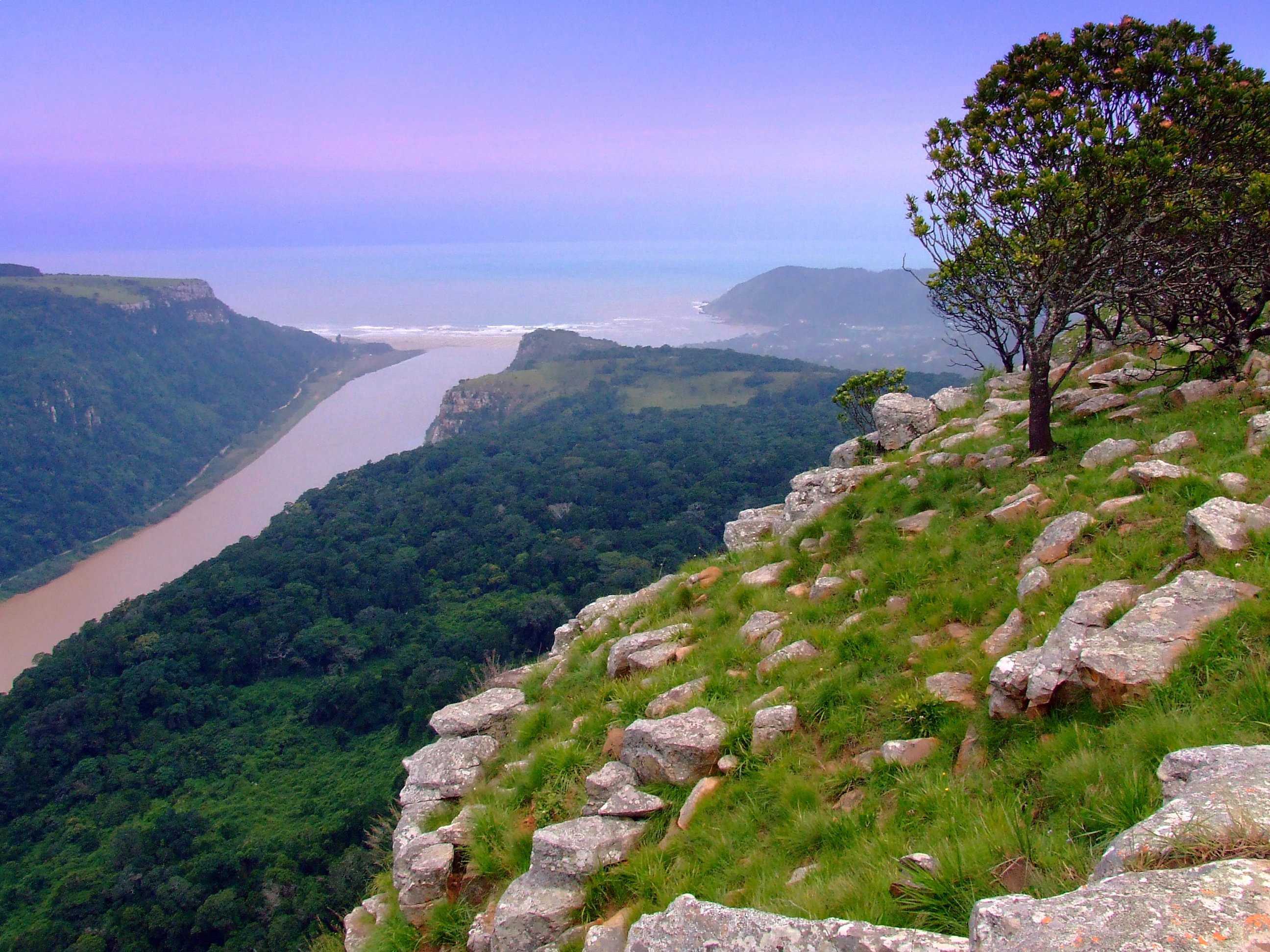Port St Johns
A History

A from the mouth of the river is a spot named New Germany. At this spot the Imperial Flag of Germany was raised and the area declared German. After a few hours, the Commander, Baron von Hartwig, realised that he’d made a mistake, and took the flag down again.fewIn the 1880’s the town was established, after negotiations with the local Pando Chiefs for rights to the banks of the river and adjacent territories.After the annexation of Pondoland, the trade at Port St Johns increased, and the port was said to have greater natural advantages than any port between Cape Town and Lorenzo Marques (now Maputo). The last vessel to dock at Port St Johns did so in the 1940s, after which the river shallowed to such an extent as to make passage impossible.

Port St Johns became a very popular holiday town. It remained popular until Transkei’s independence in 1976, after which the town went to seed. Since Transkei’s re-incorporation into South Africa, the town is once again improving.The Transkei stretches from the Kei River in the south to the Mtamvuna River in the north. Its 250km coastline, known as the Wild Coast, is famous for its ruggedness, unspoilt beaches and, as any seafaring person who sails along the South African Coast knows, the unpredictability of its weather and seas. Transkei attained self governing status from the South African Government in 1963, and independence in 1976. After being independent for 17 years it was re-incorporated into the New Republic of South Africa in 1994. Many of South Africa’s great statesmen, including former president Nelson Mandela come from this area.

Situated at the mouth of the Umzimvubu River, Port St Johns lies almost half way between Durban and East London. There are several supposed reasons for the town’s name, the most popular being: The name came from the Sao Joao, a Portuguese vessel which was believed wrecked near the river mouth in 1552. It has lately been established that the Sao Joao was actually wrecked near the town of Port Edward, but the early seafarers mislocated the wreck, and therefore the name stuck. The profile of Saint John the Baptist can be seen on the cliff face on the left-hand side of the river. Only the very imaginative can see this, so why the name came about is still a mystery. That a Portuguese ship passed the river on St. John’s day, 24th June.

From the mouth of the river is a spot named New Germany. At this spot the Imperial Flag of Germany was raised and the area declared German. After a few hours, the Commander, Baron von Hartwig, realised that he’d made a mistake, and took the flag down again.fewIn the 1880’s the town was established, after negotiations with the local Pando Chiefs for rights to the banks of the river and adjacent territories.After the annexation of Pondoland, the trade at Port St Johns increased, and the port was said to have greater natural advantages than any port between Cape Town and Lorenzo Marques (now Maputo). The last vessel to dock at Port St Johns did so in the 1940s, after which the river shallowed to such an extent as to make passage impossible.